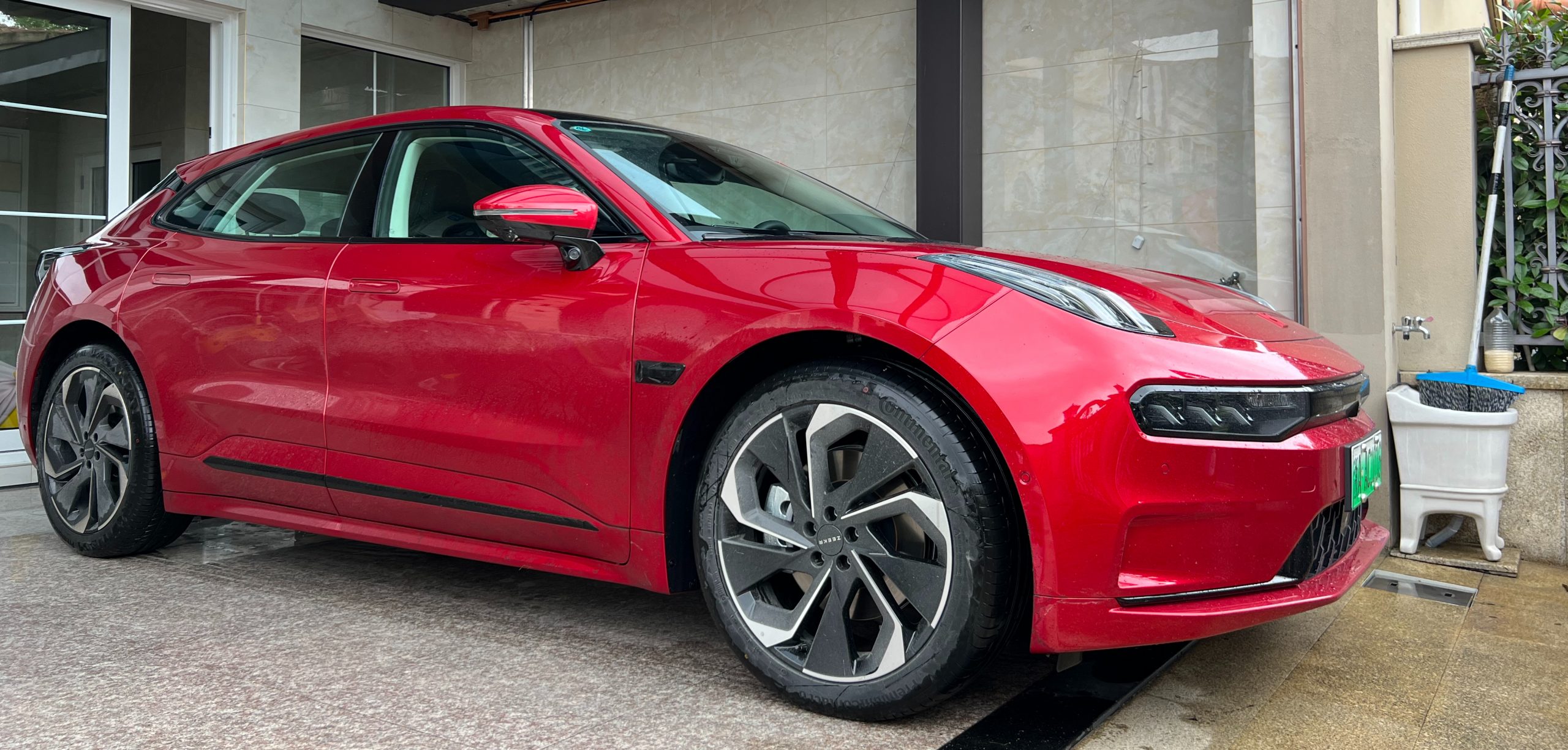The vehicle comes from the subscription service of Zeekr, which is the paid deep test drive/rental business of Zeekr for 3 days. The car received is a long-range dual-motor WE version with infrared black interior, without optional leather interior, but with its own configuration including HUD, Yamaha sound system, variable color skylight, electric door, 21-inch rims, and tire with Mercedes logo (the configuration may vary, for reference only).
The reason for wanting to take the deep test drive of Zeekr 001 is that my family elders just need to change a car, which can be a sedan, SUV or a MPV, but only considering hybrid or pure electric vehicles, not pure gasoline vehicles. In this comparison, the sedans seen here are Zeekr 001 and NIO ET7; SUVs consider G9 or L9, MPVs include Zeekr 002 or GL8 Pro PHEV, which is going to be launched soon.
In the comparison of sedans 001/ET7, the Zeekr 001 hunting version car can bring more potential for fishing tools for the family elders who are fishing enthusiasts than the traditional sedan. In addition, with the potential for city-wide navigation-assisted driving, 001 will have a cheaper price (SV compared to NAD) than ET7 when landed. In addition, considering that 001 has a 7-day subscription service, I just got one to try it out.
Below are my personal feelings about the Zeekr 001 from the overall, exterior and interior, mechanical, ADAS and intelligent cockpit interaction aspects.
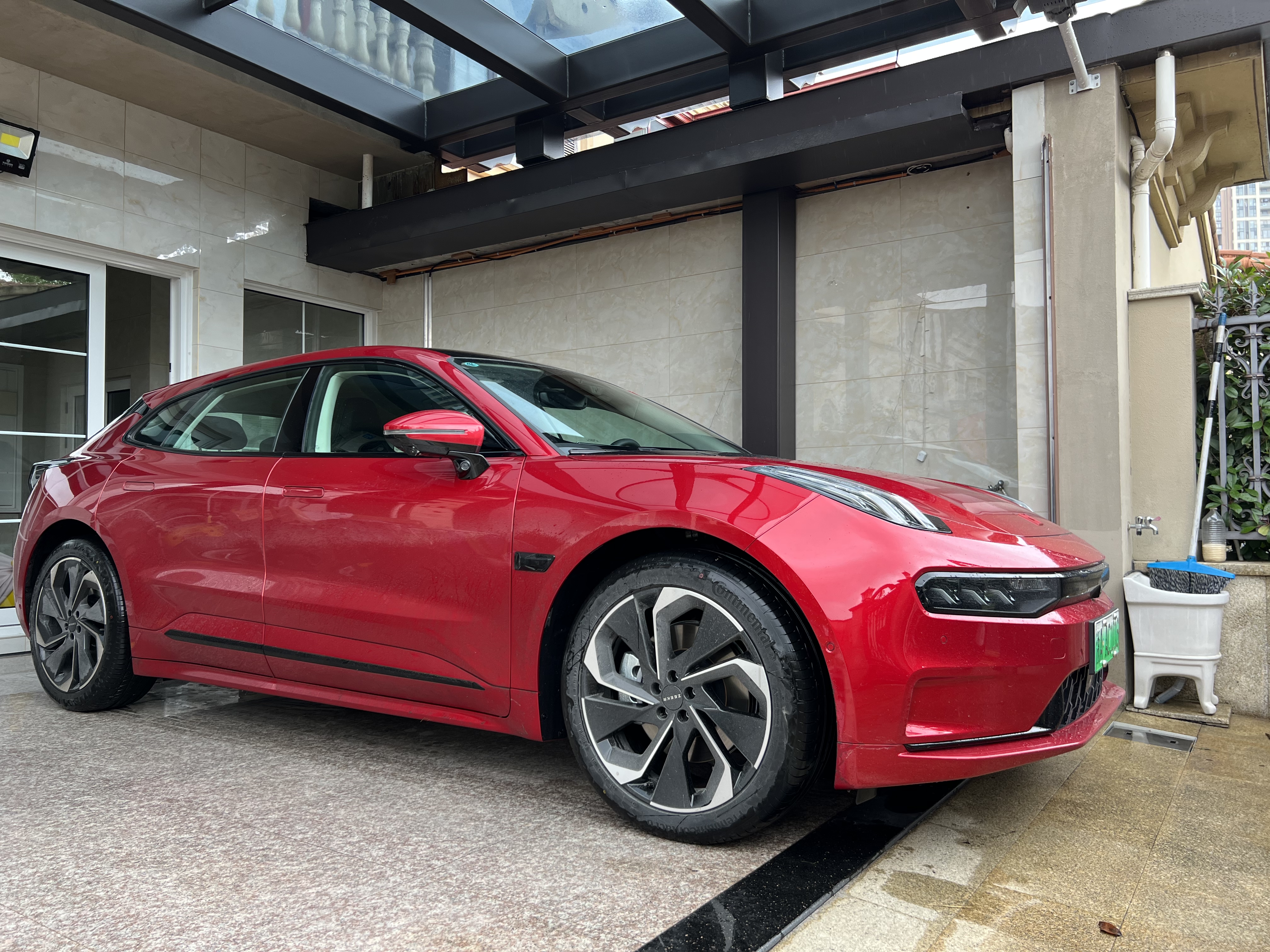
Overall
Zeekr 001 is a medium-to-large-sized hunting car with extremely high mechanical completion and excellent mechanical quality. If considering only traditional brand “non-intelligent cars,” 001’s overall competitiveness exceeds that of traditional luxury brand C-class sedans in a comprehensive dimension. However, in software, ADAS and other fields, 001 is a completely negative score product. To put it simply, the dual-motor WE version of Zeekr 001 has the hardware quality of a luxury sedan worth 500-600 thousand yuan, but the software and driving assistance functions worth negative 300 thousand yuan. This results in the overall product power can only fall back to the range of 300 thousand yuan. If this car is equipped with hardware solutions based on EyeQ4, 3 cameras, and 5-millimeter-wave radar (the driving assistance Pro of BMW) + CarPlay, this car can sell for more than 400,000 yuan without any problem.
Exterior and interior
Exterior
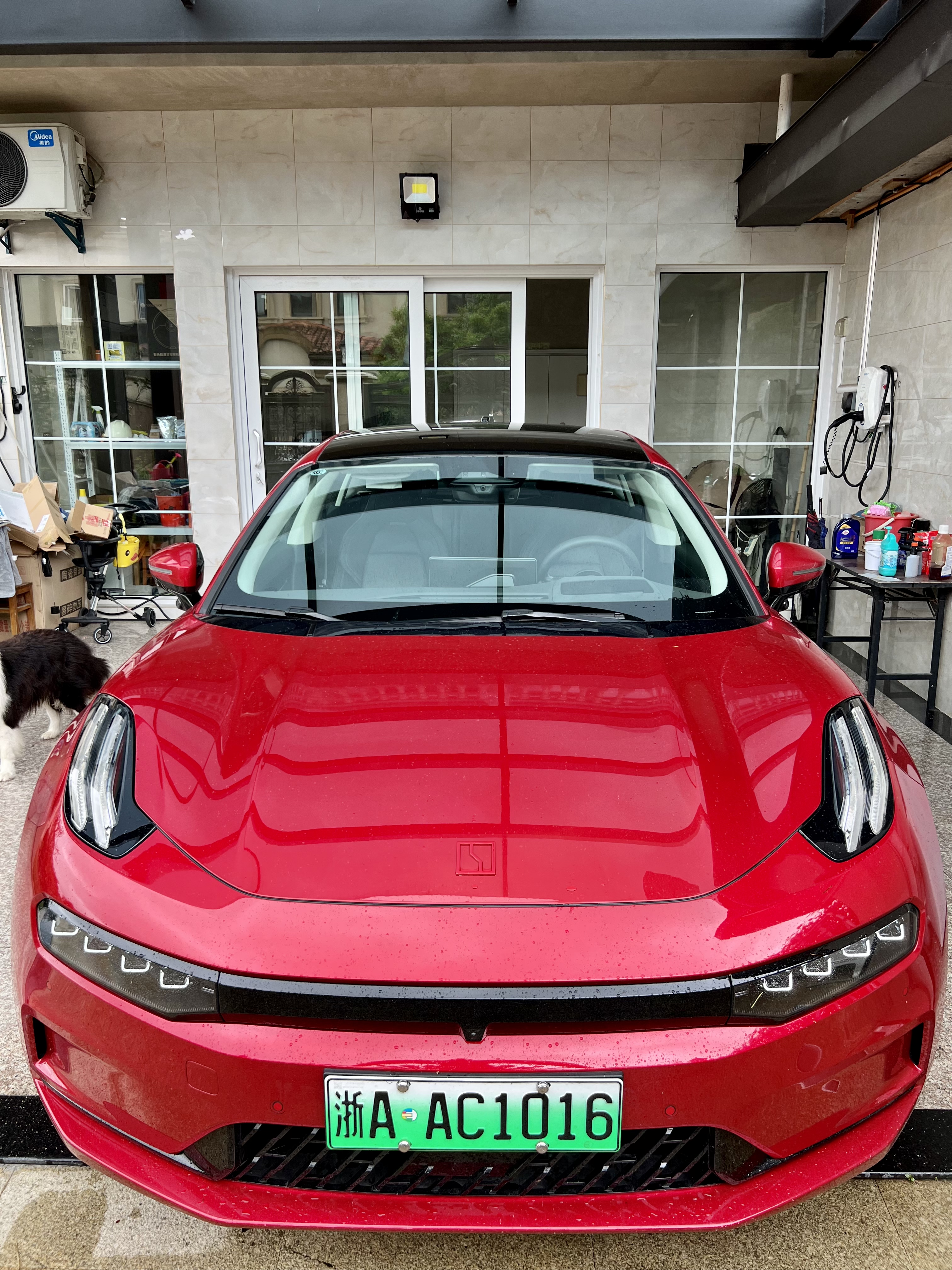 The red exterior of the car is very beautiful. After I got the car, I handed it over to several relatives and friends (all of them are experienced drivers) to give their objective assessments on the car’s exterior design. The main feedback is consistent, “This car looks very similar to Porsche Panamera, but it looks more muscular than Panamera, which compromises the sense of luxury compared to Panamera”, “At first glance, the car doesn’t seem big, but after looking at it for a while, you can feel that this car is particularly wide, muscular, and luxurious”, “The size of the wheels and tires of this car is a sign that it is a high-performance car, and the acceleration is definitely not slow”, “The design of the rear trunk, which is a ‘hunting style design,’ is very practical and can carry goods like my Model S,” and so on. The overall evaluation of the appearance is consistently positive, proving that the appearance design of JiKe 001 is indeed skilled.
The red exterior of the car is very beautiful. After I got the car, I handed it over to several relatives and friends (all of them are experienced drivers) to give their objective assessments on the car’s exterior design. The main feedback is consistent, “This car looks very similar to Porsche Panamera, but it looks more muscular than Panamera, which compromises the sense of luxury compared to Panamera”, “At first glance, the car doesn’t seem big, but after looking at it for a while, you can feel that this car is particularly wide, muscular, and luxurious”, “The size of the wheels and tires of this car is a sign that it is a high-performance car, and the acceleration is definitely not slow”, “The design of the rear trunk, which is a ‘hunting style design,’ is very practical and can carry goods like my Model S,” and so on. The overall evaluation of the appearance is consistently positive, proving that the appearance design of JiKe 001 is indeed skilled.
However, from my personal perspective, I can see that the appearance design of 001 is more considered from the design dimension rather than the energy-saving dimension. If we consider from the energy-saving dimension, the appearance design of pure electric vehicles should look more like Model S/3, EQS, which have more curves and arcs, rather than 001, which has multiple lines and decorative elements for beauty but will increase the drag coefficient. This is also what I have seen from multiple dimensions when driving later. When designing the 001, the vehicle may not have been fully considered from the perspective of pure electricity + full automatic driving.
Interior
The standard black interior is obviously not as good-looking as the colleague’s optional leather yellow or blue and white interior, and it is somewhat suppressive. However, this standard artificial leather interior has no obvious defects in terms of the softness and hardness of the seats or the application of artificial leather, plastic, and hard plastic materials in the interior of a car in the 300,000 price range. In particular, the optional suede interior top is very helpful for increasing luxury.
In addition, it is worth mentioning that 001, as a hunting vehicle, achieves the implementation of the dual function of manual flattening of the second row and electric adjustment of the second row backrest, which is really great. As for the inclination angle and support of the second-row seats, they are not bad except for the inherent deficiencies of the slightly shorter seat cushions and the lower seat height of pure electric vehicles.
If I have to mention a suggestion for the modification, then the second-row seat backrest can be considered to have a soft pillow similar to the one in the Mercedes Maybach (ideal ONE model), which may improve the comfort of the seat with a better upgrade.The two elders in my family gave very high praise to the second-row riding experience of 001 at the price of only 300,000 yuan after riding in the second row of the car. In their words, “It should be quite comfortable to ride four people in this car for long distances.” After this experience, I have a lower expectation for the second-row riding experience of ET7 than that of 001, and I hope to try it again later. As for the driver’s seat, I drove for more than 10 hours in three days and there were no major defects except that it was slightly hard. Both wrapping and support were in place. However, since I did not choose the seat ventilation and massage, it is a bit uncomfortable in summer, and my back would hurt after driving for a long time.
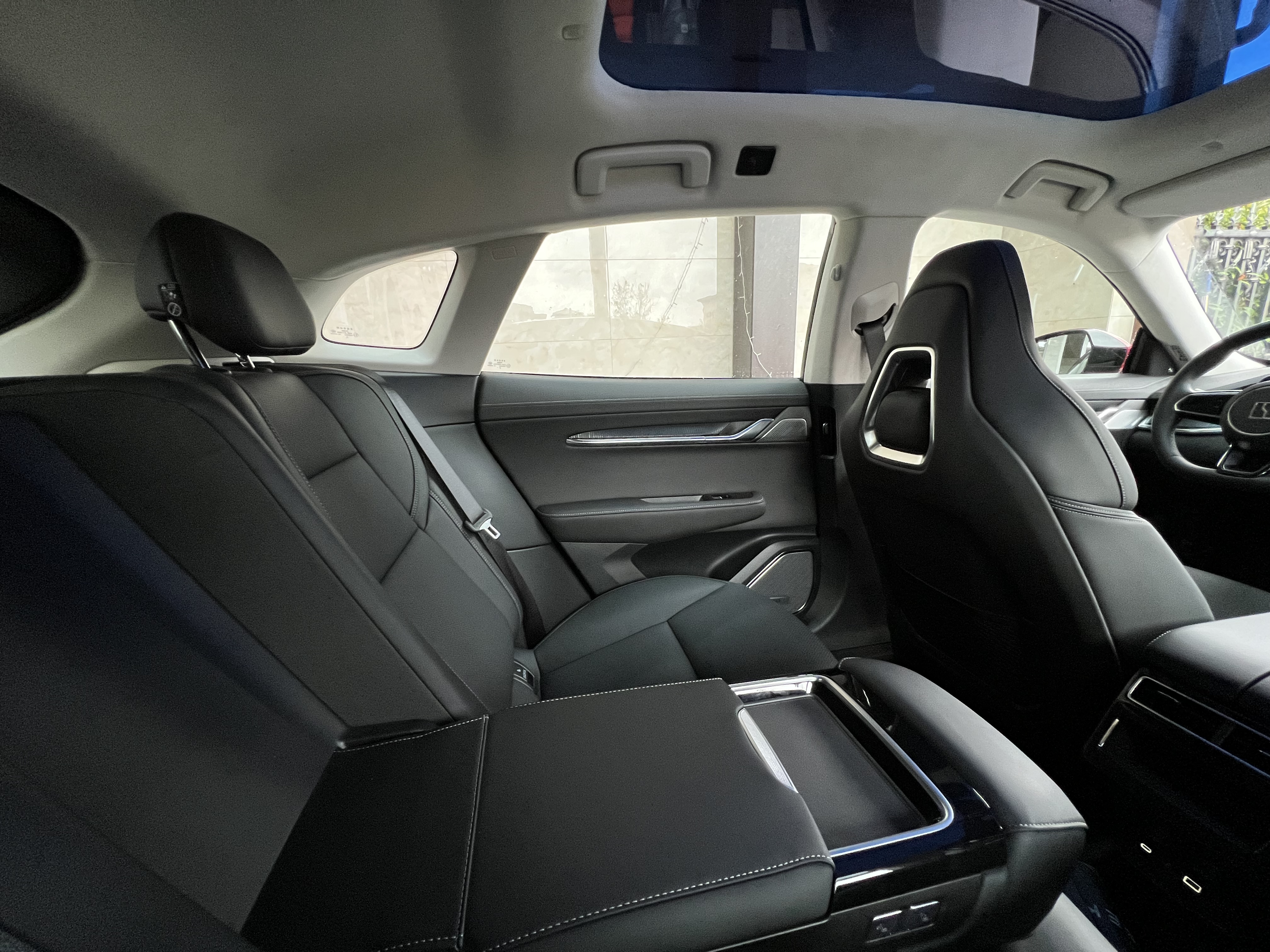
NVH
This needs to be emphasized. Before the in-depth test drive of 001, I test drove 001 for 20 minutes once and felt that the low-speed NVH was pretty good, but it was far from the level of “so quiet that it makes people uncomfortable” as mentioned in other reviews. Let me explain the NVH performance from static, low-speed, medium-speed to high-speed working conditions (I didn’t drive over 100 km/h on the airport expressway).
Static NVH, that is, static sound insulation: 001 is relatively poor in this regard, especially when waiting at red lights or intersections. The noise isolation of mud trucks and construction vehicles from the rear is relatively poor, which can be irritating. In this working condition, it cannot match the high-end C-class cars of BBA.
Low-speed and medium-speed NVH:
In terms of NVH performance, the noise isolation from the chassis of 001 is better than that of my current LEI ONE, but the tire noise dimension seems to be larger than that of ONE, probably because of the extremely wide tire size; the overall NVH dimension is better than that of BBA’s C-class, of course, electric vehicles have inherent advantages.
High-speed working condition NVH:
In this working condition, it is clear that the wind noise of 001 has increased significantly because it uses single-layer glass. However, the overall NVH of sedan models is much better controlled than that of large SUV models, and the noise of wind hitting the front of large SUVs running at high speed will be much smaller. As I almost drove it by myself and did not have the opportunity to sit in the second row, I cannot evaluate the NVH of the second row of 001 that is said by online reviews to be worse than that of the first row.
Overall, the NVH of this car is really good, but it is far from the level that other reviews say it is even better than D-class cars. Of course, NVH has strong subjectivity and is for reference only.
Optional Equipment
Sound System: The Yamaha sound system is not as good as expected, but I am not an audiophile. Overall, this optional equipment is average at its price, and can be chosen or not. I am looking forward to the high-end sound system of ET7/L9.## Electric Door
The electric door might be the most foolish optional feature on the 001. It’s slow to respond, often gets stuck, is expensive as an add-on, and the motor is very noisy. We strongly advise against installing it.
Variable Color Skylight
At 10% transparency, it’s still quite bright. The deep blue color gives a strong feeling of technology, but it’s only average at heat insulation. We recommend not installing this and going straight for a manual sun visor. I personally prefer no sunroof.
HUD
The display feels good, but there seems to be a problem with the algorithm for dynamic brightness adjustment. It’s often not bright enough when the ambient light is high, and too bright in tunnels. I’ll talk about the display content in the interaction section later.
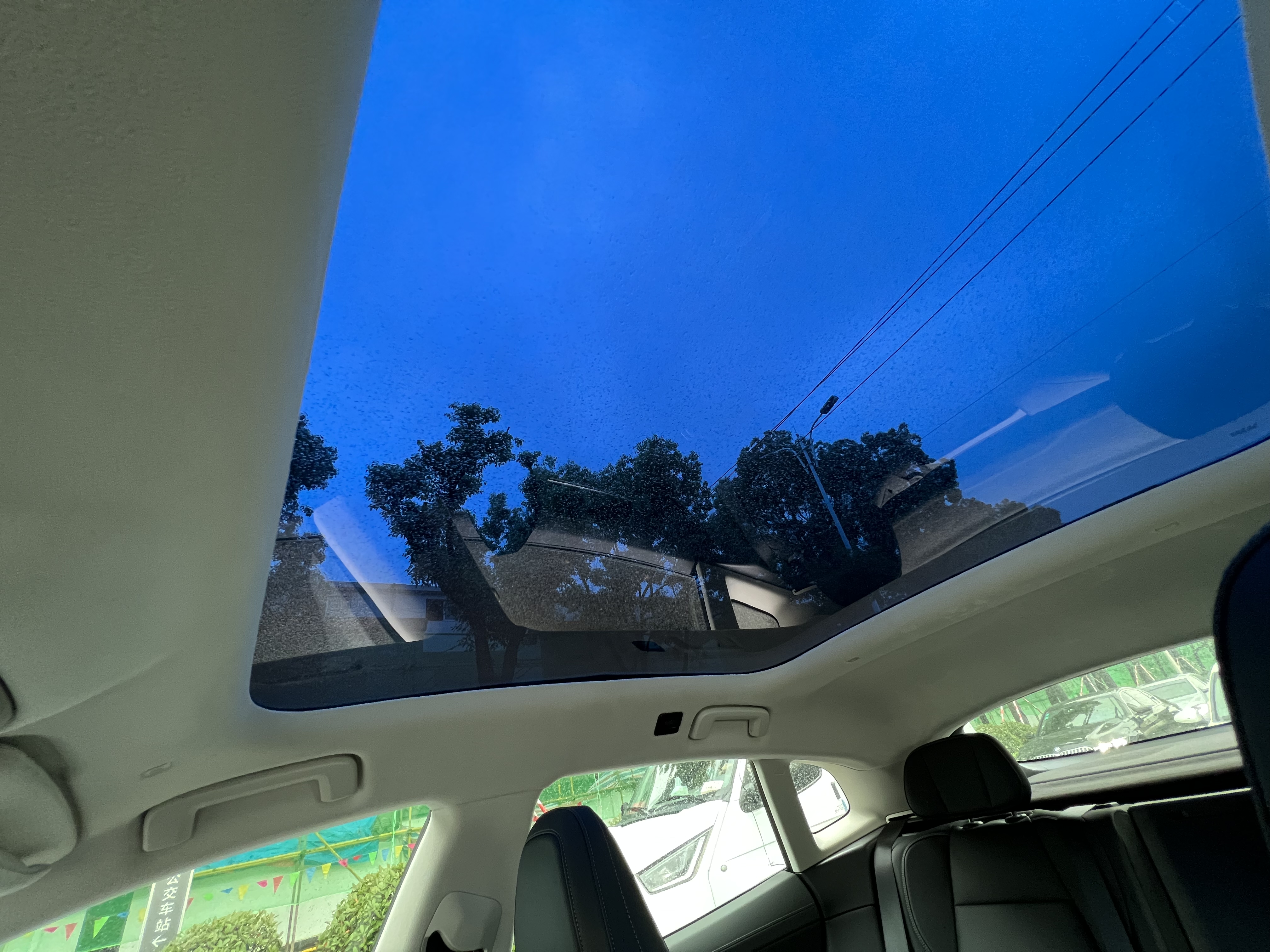
Mechanical: Power and Chassis
Power Dimension
The dual-motor version’s acceleration of over 3 seconds to 100km/h in urban areas is very enjoyable, and it feels like the power is overflowing. I hope to try the single-motor rear-wheel drive that accelerates over 6 seconds next time. In terms of absolute power dimension, the 001 dual-motor version should easily beat traditional luxury brand C-class cars, and even run neck and neck with C-class performance cars.
However, this power performance has the following issues: in sports mode, there is a clear delay when you deeply press the accelerator pedal. Apparently, this is either intentionally adjusted or due to error tolerance, and there is a delay of several hundred milliseconds in the floor electric response. Personally, I prefer the direct power feedback like Model 3 has.
Furthermore, in terms of the energy recovery dimension of electric vehicles, there is also a significant delay in the energy recovery of the 001, making it challenging to control. If adjusted to strong energy recovery, it’s easy to cause dizziness due to frequent switching of brakes and accelerator, but in single-pedal mode, which requires almost no braking in urban driving, it’s easier to control precisely and less likely to cause dizziness.
Thus, these days I usually drive in medium or low energy recovery mode, or in single-pedal mode (takes about ten minutes to get used to).
Chassis
When I got the car, it didn’t come with air suspension, only mechanical springs. However, the chassis quality of the PMA platform with mechanical springs was very, very pleasing. There is almost no fault in terms of vibration filtering, chassis consistency, and confidence when turning. In terms of the chassis dimension, I think this car is overall better than the 530Li and far superior to the Mercedes E-Class.Here I only mention a few drawbacks of the car: it still needs to improve its filtering capability for large vibrations, which may require air suspension to achieve good filtering; in addition, the phenomenon of lifting the head is still quite obvious under rapid acceleration, but other than that, there are almost no shortcomings. The entire car doesn’t seem like a 5-meter long, 2-meter wide vehicle (of course, it can’t be as agile as small cars like Model 3 due to its size).
In short, from the perspective of power and chassis, this car is truly an excellent driver’s car.
ADAS
After praising the car, let’s start criticizing it!!!
001 This set of driving assistance hardware comes from the modified version of Super Vision (SV), an all-round visual perception solution provided by Mobileye (with the addition of millimeter-wave radar). The SV perception solution, for example, can achieve point-to-point navigation driving assistance under city working conditions in demo versions in cities such as New York and Jerusalem under the REM map management mode of Mobileye, realizing point-to-point navigation driving assistance in all scenarios from home (parking lot) to work (parking lot) under the L2 driving assistance safety level. The hardware provides 7 8-megapixel high-definition cameras, 4 2-megapixel fish-eye cameras, all of which are involved in ADAS perception, 12 ultrasonic radars, 1 forward millimeter wave radar, and DMS cameras, etc. The SV system was originally designed to not require other sensors such as millimeter-wave radar for perception, only cameras were needed for perception, and USS was needed for supplementary purposes at most. However, even after one year after the delivery of the extremely geeky 001, it has only realized the following functions: FCW (Forward Collision Warning), AEB (Automatic Emergency Braking), ACC (Adaptive Cruise Control with Queue Assist), Lane Departure Warning, and nothing else.
In other words, this car hasn’t even developed a single-lane L2 driving assistance that integrates lane centering keeping and full-speed ACC, let alone the most basic BSD (Blind Spot Display, Blind Spot Warning).
In the case of BSD, we can see that it has not been developed yet, because 001’s rear only has left and right 8-megapixel cameras and a rear streaming rearview mirror camera and a rear fisheye camera, proving that the basic functions of these cameras have not been opened at this stage, and even the simplest perception of the vehicle and control with the cameras on both sides have not been done, so there is naturally no blind spot warning.In the experience of using ACC, the actual experience of ACC’s acceleration and deceleration is very poor, and the acceleration and deceleration is not smooth enough. In cruise mode (such as control cruise at 100 km/h without vehicle in front), the speed will also fluctuate between 99-101 km/h. In addition, the perception of ACC’s millimeter-wave radar has not been included in the regulation when used in urban areas, and only one of the front dual-camera is used. Because in high-speed working conditions, ACC often loses track of the car in front, that is, if the car in front is 100 meters away when driving at high speed, ACC frequently loses track (both in the instrument and HUD will be displayed). If it is a millimeter-wave radar (250 meters forward detection of moving vehicle identification, it is unreasonable to lose).
I originally wanted to cover the camera and try again, but because my child got sick, I was too busy to conduct the experiment.
In addition, we have major problems with ADAS when we look at the activation, display, and other methods of ACC. For example, the HMI display mode of the dashboard is completely different from that of ACC’s standby mode when ACC is activated, including the size and angle of the vehicle model. The HMI display content from ADAS overlaps with the most important vehicle speed!. In the HUD ADAS display mode, highlighting the multiple vehicle recognition and target vehicle cannot be displayed (the HUD launch of NIO and Geely other car models is also very unchanged (anyway, I think the physical button is more suitable for the multifunctional steering wheel)).
Of course, there are also some advantages: after FCW is activated, if you step on the brake, the car will give you an active assistance to brake, and this brake is not a full brake, the interactive function of actively increasing the braking force is done very well.
To sum up: As an advanced hardware system of ADAS, after one year of delivery, only one of the front dual cameras may be activated, and only the most basic ACC and lane departure warning have been implemented, and there are various interaction and display issues in the instrument/HUD display. It is really hard to expect how this car will achieve city point-to-point full-scene driving assistance functions in the future.Here I would like to add a point: the dashboard of the Geely JiChe 001 is very small and flat, with very little display content (if more is added in the future, it may be difficult to read). Also, it is not an AR HUD. In the future, if the NOA navigation-assisted driving in urban environments is to be implemented, how should the HMI design for this ADAS function be done? The demo version of the HMI display of SV from ME uses a large vertical screen for ADAS scene reconstruction display (this is also the direction taken by Model 3 and other vehicles). However, the current central control of Geely JiChe 001 is very slow even if upgraded with the 8155 chip, and there is no guarantee that it will not freeze or encounter other problems. Additionally, if all-scene display is implemented on the central control, is it enough to display some important information on such a small instrument panel and normal HUD? In retrospect, when designing the interior of 001, did they not consider the dimensions of the hardware display content required for the HMI of the point-to-point all-scene driving assistance function and design such a small and delicate dashboard?
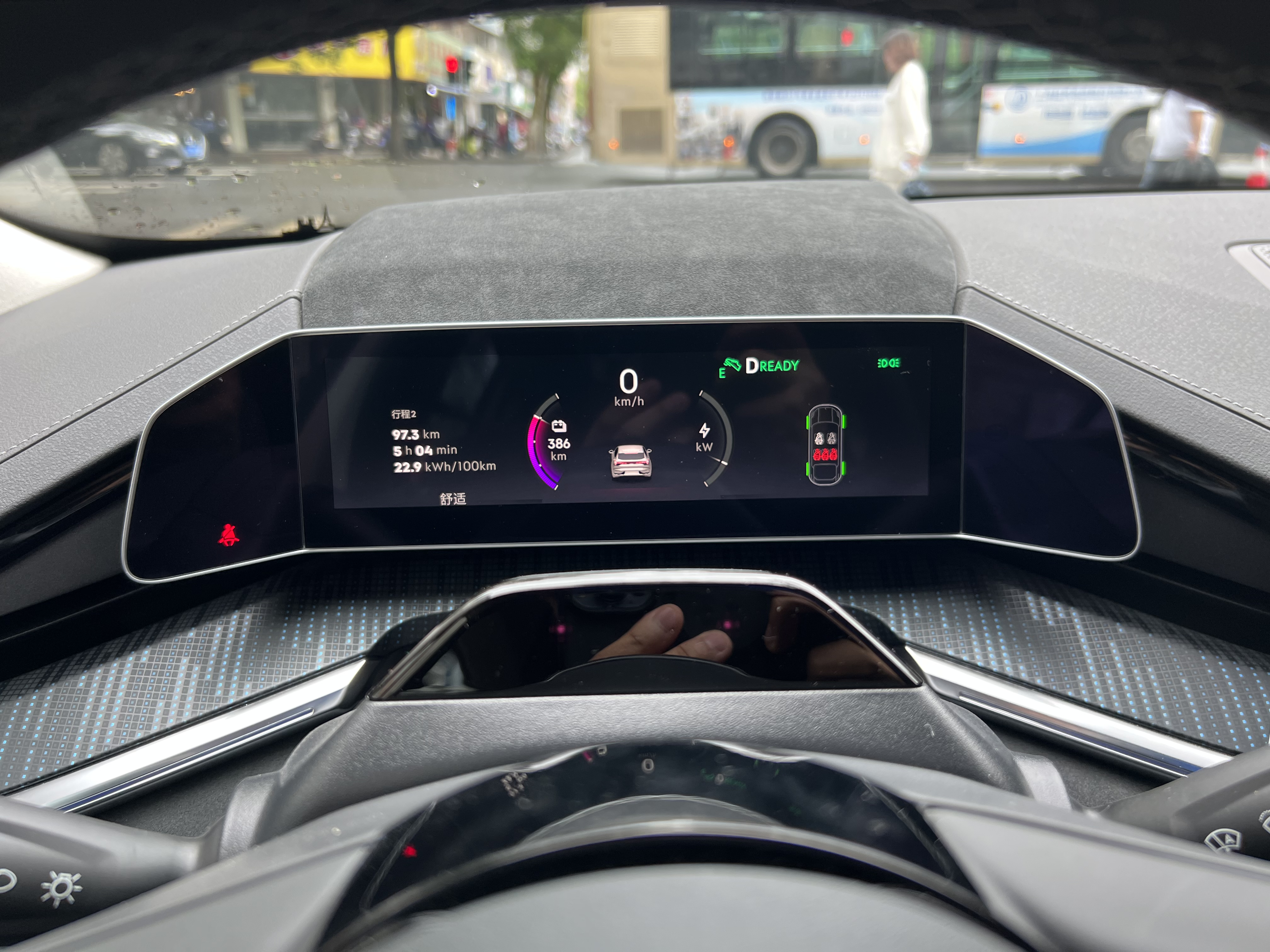
The reason why I am so disappointed with this ADAS of 001 is because I had very high hopes for the SV system demo version using the ME dual EyeQ5h platform. At that time, I even thought that this system might be the fastest to land in the urban scene navigation-assisted driving in China. However, the fact is that the 001 provided me with only ACC and lane departure warning in 2022. From the perspective of consumers, such software iteration performance of 001 is far from satisfactory for consumers. Whether it is because of communication problems between Geely and Mobileye, the difficulties in cooperation, or the domestic REM regulation (which can be discussed in tens of thousands of words), it is not consumers’ fault. Therefore, I still hope that Geely and JiChe can increase investment in this area, and land these advertised functions as soon as possible, instead of wasting energy on using one set of algorithms from one supplier and buying a set of hardware from another supplier. To really achieve good driving assistance and autonomous driving, continuous investment of a large amount of energy and manpower is needed. Personally, I hope that JiChe can launch city NOA and even higher-level driving assistance functions in the same time dimension as Tesla’s FSD beta and domestic new energy vehicles in the future.
Intelligent CockpitWhy is the intelligent cockpit mentioned last? Because the extremely poor performance of the car, the NIO EC6, especially in this area. Firstly, the car’s infotainment system has lagged several times. After starting up, the air conditioning interface would show “launching” and my colleague’s EC6 suffered from a backup radar and image display delay caused by the car’s lagging, resulting in scratches on other vehicles during reverse parking. This infotainment system not only cannot be compared with several new automakers but also has significant deficiencies compared to traditional luxury car brands.
The following are some examples:
- In the main interface, I was unable to adjust the different scales of the display card for energy consumption when I clicked to enlarge it.
- If the continuous air conditioning control function is engaged, the key card lock cannot be used. Swiping the key card over the car door will open it. Fortunately, I figured out that this problem might have occurred due to the continuous control function. After turning off the feature, I could finally lock the car. Continuous air conditioning control should allow external locking of the car, but it is more reasonable to allow internal unlocking of the vehicle at the same time, rather than the current state where one is unable to lock the car.
- Various menu logical hierarchies are unclear, and in my first three days of driving, it took me until the second day to figure out the specific menu logic, and many functions cannot be controlled by voice commands. For example, the warning sounds for pedestrians outside of the car cannot be opened or closed using voice commands. The control button for the vehicle would run in repetition, for example, in ADAS mode, turning on lane departure warning, then automatic shutting off, then turning it back on again. The seat memory and adjustment of the external rearview mirrors both require the car’s infotainment system and a multifunction steering wheel to adjust, which is very cumbersome and has a high learning curve. A 001 car owner and I said, “Once you’ve adjusted everything, don’t touch it again. If you can use voice commands, use them, as it is still usable, albeit just functioning adequately.”
- The air conditioning interface has excellent display effects, and the air outlet is also designed similarly to that of a Tesla Model 3 model, but the control is relatively unintuitive (I prefer the traditional control method anyway). Also, to adjust the temperature in the fixed control area at the bottom, you need to click and slide, which is inefficient and not easy to control (but it’s easy to use voice commands).
- The streaming media rearview mirror is used to replace the rearview mirror in some situations (such as when the second row is fully loaded and the rearview mirror is blocked, which is common in large SUV/MPV s). Still, the speed of the EC6’s streaming media rearview mirror is so fast that it cannot be opened? The logic is magical.
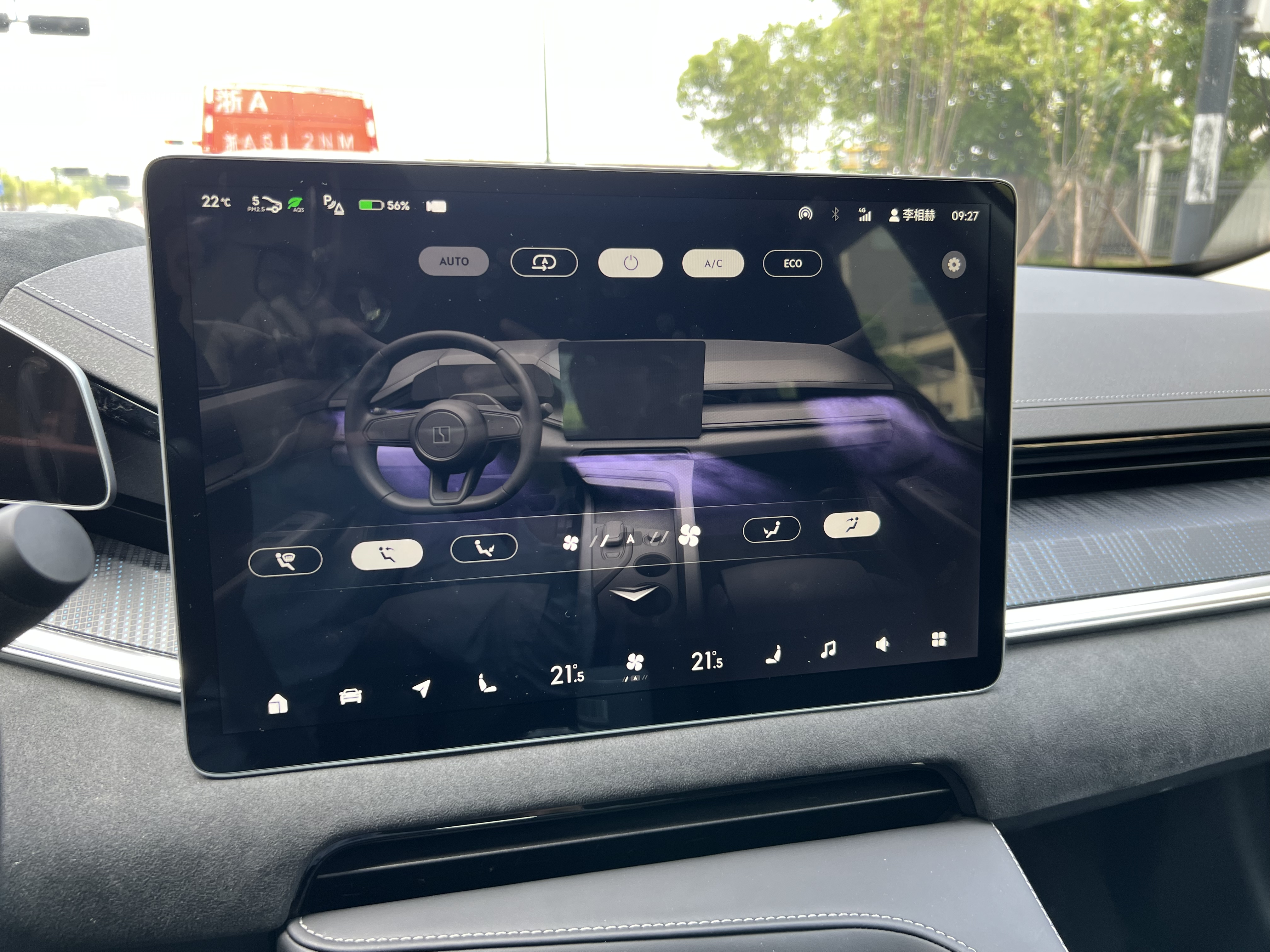 6. Smart light with automatic 360-degree display is a great feature found in Geely cars, but it’s not so impressive in the 001 because of the distortion and difficulty in accessing the small exit button. Sometimes it’s better to not have this feature.
6. Smart light with automatic 360-degree display is a great feature found in Geely cars, but it’s not so impressive in the 001 because of the distortion and difficulty in accessing the small exit button. Sometimes it’s better to not have this feature.
However, there are some impressive features, for example, the central control can adjust the position of all four seats, including the front and back angles of the front row and the angle of the second row. It shows that the product has a well-designed control system. From one perspective, the main driver’s seat can be adjusted automatically when selecting the assistant driver’s seat on the central control screen, which is more intuitive.
Overall, the intelligent cabin of this car seems to be a separate product rather than being integrated with its driving assistance features. It’s even worse than many “non-smart” cars. Hopefully, after the OTA hardware upgrade to 8155, the car and intelligent cabin teams can think about what makes a good car and what makes a good cabin for a person-car coordination.
Conclusion
Thanks to Zeekryou, I had the opportunity to test drive (not free) the 001, which is an excellent product with excellent hardware quality. Even my elders at home gave high marks to its appearance, interior, chassis, power, and other dimensions. Spending 300,000 RMB on a pure electric car with this hardware configuration is worth it (I didn’t test the fast charging power or endurance due to time constraints). However, its ADAS/intelligent cabin is a significant part that lowers its value. I hope that Zeekryou team can work harder in this area and implement city navigation-assisted driving (Door to Door) as soon as possible. I’m also looking forward to the launch of the Zeekryou 002 luxury MPV to bring more surprises. After the NOA system is implemented in the urban area, I will try my best to test its actual performance. As a matter of fact, my family really needs an intelligent MPV with L4 driving assistance, long endurance (high voltage BEV/REV), and flexible space.
An MPV is the ultimate destination for men!
This article is a translation by ChatGPT of a Chinese report from 42HOW. If you have any questions about it, please email bd@42how.com.
